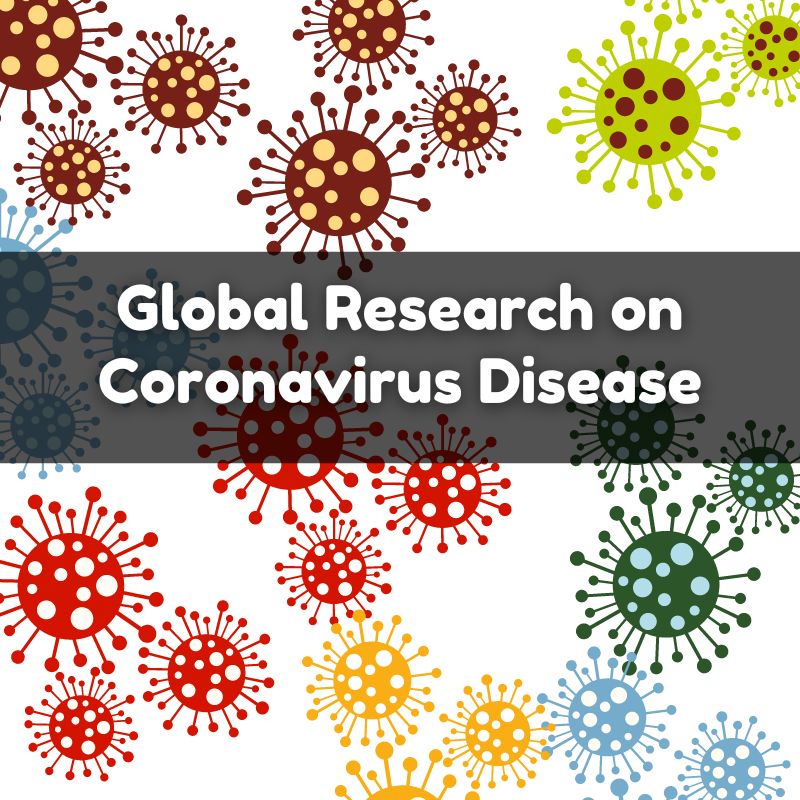
The outbreak of the coronavirus disease, commonly known as COVID-19, has sparked an unprecedented global research effort. From understanding the virus’s origin to developing vaccines and treatments, scientists around the world have been working tirelessly to combat this pandemic. This blog post delves into the global research landscape surrounding COVID-19, highlighting key areas of study, major breakthroughs, and the ongoing challenges in the fight against the virus.
1. Understanding the Origin and Transmission of COVID-19
One of the first and most crucial areas of research focused on understanding the origin of SARS-CoV-2, the virus responsible for COVID-19, and how it spreads among humans. Early studies identified the virus as originating from a wet market in Wuhan, China, and spreading through respiratory droplets.
- Zoonotic Origin: Research suggests that SARS-CoV-2 likely jumped from animals to humans, possibly through an intermediate host. This zoonotic origin is similar to other coronaviruses like SARS and MERS.
- Transmission Dynamics: Studies on transmission have been essential in developing guidelines for social distancing, mask-wearing, and quarantine measures. Understanding how the virus spreads in different environments has informed public health policies globally.
2. Development of Diagnostic Tools
The ability to quickly and accurately diagnose COVID-19 has been critical in managing the pandemic. Global research efforts have led to the development of various diagnostic tests, each with its own strengths and limitations.
- PCR Testing: Polymerase Chain Reaction (PCR) tests have been the gold standard for COVID-19 diagnosis due to their high accuracy. These tests detect the genetic material of the virus and are widely used in hospitals and testing centers.
- Rapid Antigen Tests: These tests offer quicker results but are generally less accurate than PCR tests. They have been useful in settings where fast screening is necessary, such as in schools and workplaces.
- Serological Tests: These tests detect antibodies in the blood, indicating whether a person has been previously infected with the virus. They have been crucial in understanding the spread of the virus and in studies of population immunity.
3. Vaccine Development and Deployment
Perhaps the most significant area of research during the pandemic has been the development of COVID-19 vaccines. The global collaboration in vaccine research has been unprecedented, leading to the rapid development and approval of several vaccines within a year of the pandemic’s onset.
- mRNA Vaccines: Pfizer-BioNTech and Moderna developed the first mRNA vaccines, which use a small piece of the virus’s genetic code to stimulate an immune response. These vaccines have shown high efficacy in preventing severe disease and death.
- Viral Vector Vaccines: Vaccines like AstraZeneca’s and Johnson & Johnson’s use a harmless virus to deliver instructions to cells to produce an immune response. These vaccines have been vital in the global vaccination campaign, especially in lower-income countries.
- Challenges in Distribution: Global research also focused on overcoming challenges in vaccine distribution, particularly in ensuring cold chain logistics for mRNA vaccines and addressing vaccine hesitancy.
4. Therapeutics and Treatment Protocols
In addition to vaccines, research into therapeutics and treatment protocols has been crucial in reducing COVID-19 mortality. Scientists have explored a range of treatments, from repurposing existing drugs to developing new antiviral medications.
- Antiviral Drugs: Remdesivir was one of the first antiviral drugs approved for COVID-19 treatment. Ongoing research continues to evaluate its efficacy alongside newer drugs like Molnupiravir and Paxlovid.
- Monoclonal Antibodies: These lab-made antibodies have been used to treat COVID-19, particularly in high-risk patients. Research has shown that monoclonal antibodies can reduce the severity of illness if administered early.
- Corticosteroids: The use of corticosteroids like dexamethasone has been a breakthrough in treating severe COVID-19 cases by reducing inflammation and improving survival rates in critically ill patients.
5. Understanding Long COVID
As the pandemic progressed, researchers began to focus on the long-term effects of COVID-19, commonly referred to as “Long COVID.” This condition affects individuals who continue to experience symptoms weeks or months after recovering from the acute phase of the disease.
- Symptoms and Impact: Long COVID can include a wide range of symptoms, such as fatigue, cognitive impairment, and respiratory issues. Research is ongoing to understand the mechanisms behind these persistent symptoms.
- Treatment Approaches: While there is no specific treatment for Long COVID, research is exploring various rehabilitation approaches, including physical therapy and cognitive behavioral therapy, to help patients manage their symptoms.
6. Global Collaboration and Data Sharing
One of the most remarkable aspects of COVID-19 research has been the level of global collaboration and data sharing. Scientists, public health experts, and governments have worked together to share findings, resources, and data to accelerate the response to the pandemic.
- Open Access Research: Journals and research institutions have made COVID-19 research freely available to the public, ensuring that vital information is accessible to researchers worldwide.
- International Research Networks: Initiatives like the World Health Organization’s Solidarity Trial have brought together researchers from around the globe to evaluate potential treatments in a coordinated manner.
7. The Role of Public Health Measures
Research into the effectiveness of public health measures has been essential in guiding global responses to the pandemic. Studies have evaluated the impact of interventions such as lockdowns, mask mandates, and vaccination campaigns on controlling the spread of the virus.
- Effectiveness of Interventions: Research has shown that early and stringent public health measures were effective in reducing transmission rates and preventing healthcare systems from being overwhelmed.
- Behavioral Research: Understanding public compliance with health measures and vaccine uptake has been another critical area of study, informing strategies to improve public adherence to guidelines.
Conclusion
The global research effort on COVID-19 has been unparalleled in its scope and speed. From understanding the virus’s origins to developing vaccines and treatments, researchers have made significant strides in combating the pandemic. As the world continues to navigate the challenges posed by COVID-19, ongoing research will be crucial in addressing new variants, improving treatments, and ultimately ending the pandemic. The collaboration, innovation, and dedication seen in the global research community offer hope for a future where we are better equipped to handle such crises.
